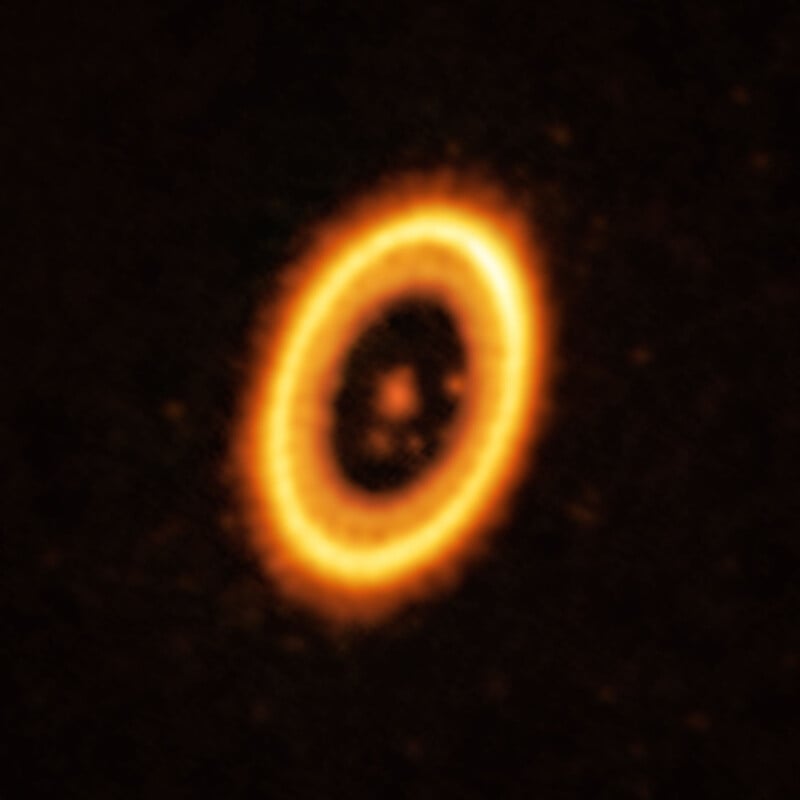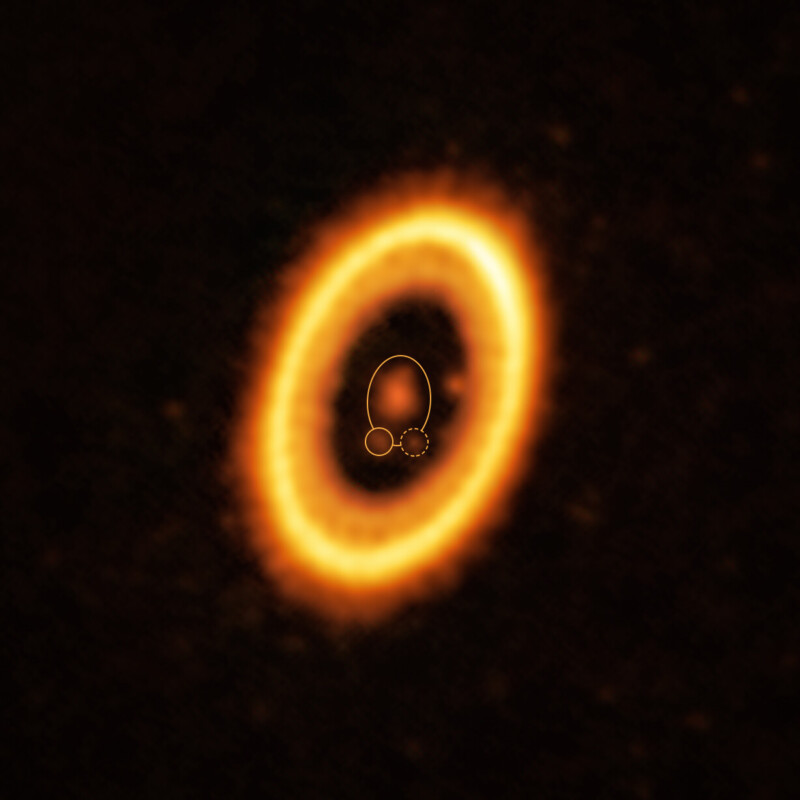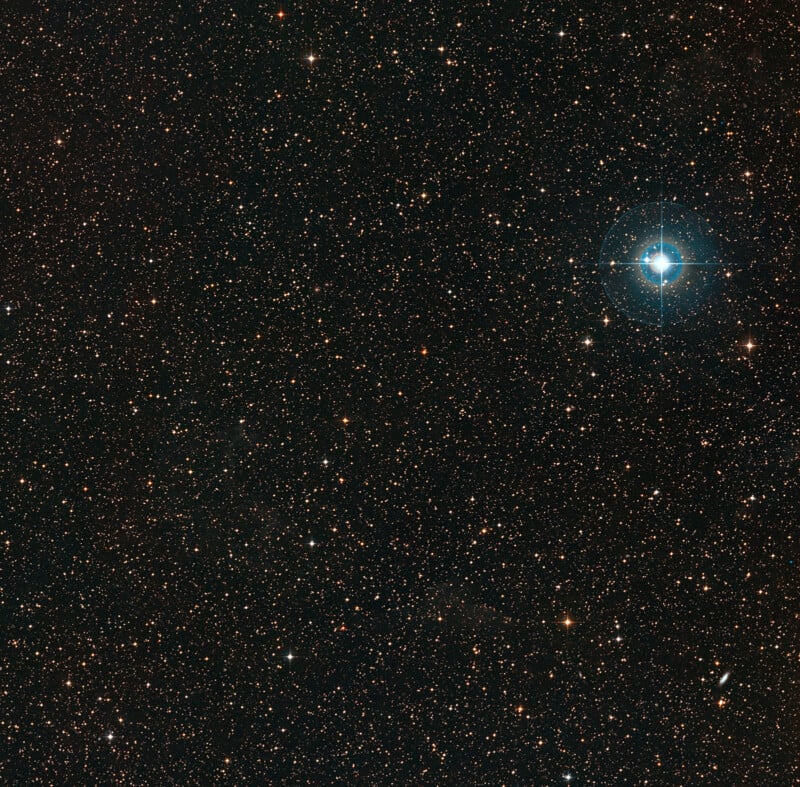Scientists Capture First Evidence That Two Planets Can Share the Same Orbit

An international team of scientists has captured the first observational evidence showing that two planets can share the same orbit around a star.
Two objects that share the same orbit as a planet are common even in Earth’s Solar System and are called Trojans, and the most famous example are the Trojan asteroids of Jupiter — more than 12,000 rocky bodies that are in the same orbit around the Sun as the massive gas planet. When asteroids in Jupiter’s orbit were first discovered, they were named after heroes of the Trojan War, giving rise to the name Trojans to refer to these objects.
But where scientists have theorized Trojan planets — full planets, not just rocky bodies — could do the same, there has been scant evidence to prove it prior to this point.

ESO/B. Tafreshi
That has changed thanks to an image captured with the Atacama Large Millimeter/submillimeter Array (ALMA) which shows a star in the PDS 70 system that is being orbited by two planets that appear to be Trojan located nearly 400 light-years away from Earth.
“The system features a star at its center, around which the planet PDS 70b (highlighted with a solid yellow circle) is orbiting. On the same orbit as PDS 70b, indicated by a solid yellow ellipse, astronomers have detected a cloud of debris (circled by a yellow dotted line) that could be the building blocks of a new planet or the remnants of one already formed,” the European Southern Observatory says.
Astronomers detected a faint signal from one of the two regions of PDS 70b’s orbit, indicating a cloud of debris with a mass of up to roughly two times that of Earth’s Moon might be there.

“Trojans occupy the so-called Lagrangian zones, two extended regions in a planet’s orbit where the combined gravitational pull of the star and the planet can trap material,” the European Southern Observatory explains. “The ring-like structure that dominates the image is a circumstellar disc of material, out of which planets are forming. There is in fact another planet in this system: PDS 70c, seen at 3 o’clock right next to the inner rim of the disc.”
Based on the observation, scientists believe they could be looking at an existing set of Trojan planets, or at least at the early stages of that second planet forming.
“Who could imagine two worlds that share the duration of the year and the habitability conditions? Our work is the first evidence that this kind of world could exist,” says Balsalobre-Ruza, a student at the Centre for Astrobiology in Madrid, Spain who led the paper published on the findings.

“We can imagine that a planet can share its orbit with thousands of asteroids as in the case of Jupiter, but it is mind-blowing to me that planets could share the same orbit.”
“Our research is a first step to look for co-orbital planets very early in their formation,” says co-author Nuria Huélamo, a senior researcher at the Centre for Astrobiology.
“It opens up new questions on the formation of Trojans, how they evolve, and how frequent they are in different planetary systems,” Itziar De Gregorio-Monsalvo, ESO Head of the Office for Science in Chile, who also contributed to this research, adds.
The team will have to wait until after 2026 to confirm their findings when they are scheduled to return to ALMA to see if both the planet and the cloud debris that could be its twin move significantly along their orbit together around the star. If confirmed, Balsalobre-Ruza says it would be a breakthrough in the explanatory field of study.